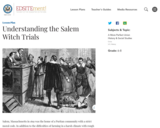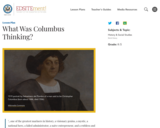
"I believe that the creation of an independent constitutional court, with the authority to declare unconstitutional laws passed by the state or federal legislatures, is probably the most significant single contribution the United States has made to the art of government."
— Chief Justice William Rehnquist’s remarks at the rededication of the National Archives (September 17, 2003).
"The judicial power shall extend to all cases, in law and equity, arising under this constitution…"
— Article III of The United States Constitution
The federal judiciary, which includes the Supreme Court as well as the district and circuit courts, is one of three branches of the federal government. The judiciary has played a key role in American history and remains a powerful voice in resolving contemporary controversies. The first governing document of this nation, the Articles of Confederation, gave Congress certain judicial powers, but did not establish a distinct federal court system. During the Philadelphia Convention, discussion of a federal judiciary was not a critical part of the deliberations that led to the creation of the Constitution. However, debate over the exact nature and role of the federal judiciary did begin in the Constitutional Convention and continue through the ratification process and into the early years of the Republic.
This lesson provides an introduction to the Supreme Court. Students will learn basic facts about the Supreme Court by examining the United States Constitution and one of the landmark cases decided by that court. The lesson is designed to help students understand how the Supreme Court operates.
What powers are given to the judiciary in the Constitution?
How do the Constitution and government institutions protect judicial independence?
How does the federal judiciary system work?
Should Supreme Court justices have term limits?
Identify the key provisions in the Constitution relating the judiciary.
Explain the meaning of an independent judiciary and systems in place to protect this independence.
Evaluate how the power and influence of the Supreme Court over laws has changed over time.
Analyze the difference between a trial conducted in a district court and an appellate court hearing.
Evaluate the extent to which the U.S. judiciary system ensures justice for all.
- Subject:
- Civics and Government
- Social Studies
- Material Type:
- Case Study
- Diagram/Illustration
- Lesson Plan
- Primary Source
- Simulation
- Author:
- MMS
- NeH Edsitement
- Date Added:
- 06/04/2023

